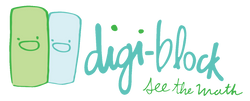

Fun Activities to Teach Kids Mental Math


In the real world, there are times when we don’t have access to a calculator or pencil and paper and more than an estimation is required. Adults do mental math every day on a regular basis without realizing it. Teaching kids to do mental math doesn’t have to be challenging; there are many fun activities kids can engage in at school and at home to reinforce this concept.
Older elementary students should be using mental math regularly. These students use math to keep track of their grades in their classes, how much of their allowance they have spent, how much money they need to save to purchase the latest video game, etc. Kids do all of this math in their heads, but they probably don’t realize that what they are doing is called ‘mental math.’
Before students can be successful in using mental math, they must first be proficient in their basic math facts. They should be able to automatically add and subtract numbers 1-20, know their multiplication facts up to the 12s, and the basic elements of division. Memorization is not enough; it must be accompanied by understanding.
Younger elementary students need to have experience working math problems using manipulatives, identifying patterns, and practicing reasoning skills. If a student doesn’t know the answer to 4 X 6, the teacher should encourage him or her to think about an answer to a related problem such as 4 X 3 or 2 X 6. That information could be used to build the child up to solving 4 X 6. The answer should not merely be “it’s 24.” It should be reasoned out thoughtfully, with each step explained.
Students need to know when to use mental math. Estimates are frequently not acceptable answers in the classroom or real-world situations (See how far “I have roughly 2 kids” will get you). Sometimes the exact answer is needed. For example, accuracy is important when paying for items at a store. Estimates are fine when modifying recipes or determining how much material to buy for a large project. But to practice the skill of determining when to use mental math and when to find accurate answers, have your child make a list of all the ways his or her family uses math in the real world. Next, have your child divide the list into categories of when mental math is used and when accurate answers are required.
Provide opportunities for students to use mental math. Real-life lends itself to these mental math problems constantly. For example, make a grocery list with prices of the items. Have students figure out the smallest dollar unit they could use to pay for a particular basket of items. Will these 6 things require you to give the cashier a $10 bill, or will you need to hand over $15?
Ask your child also about how much change you should get back when you give the cashier a $20 bill on a $15.75 purchase? Make this sort of double-checking second nature. Another example would be for students to figure out how many loaves of bread they would need to make sandwiches for school lunches for a week.
Some students may ask to use a calculator for these mental math activities. When numbers get too large, this is fine. But conceptual reasoning is always preferred.

0 comments